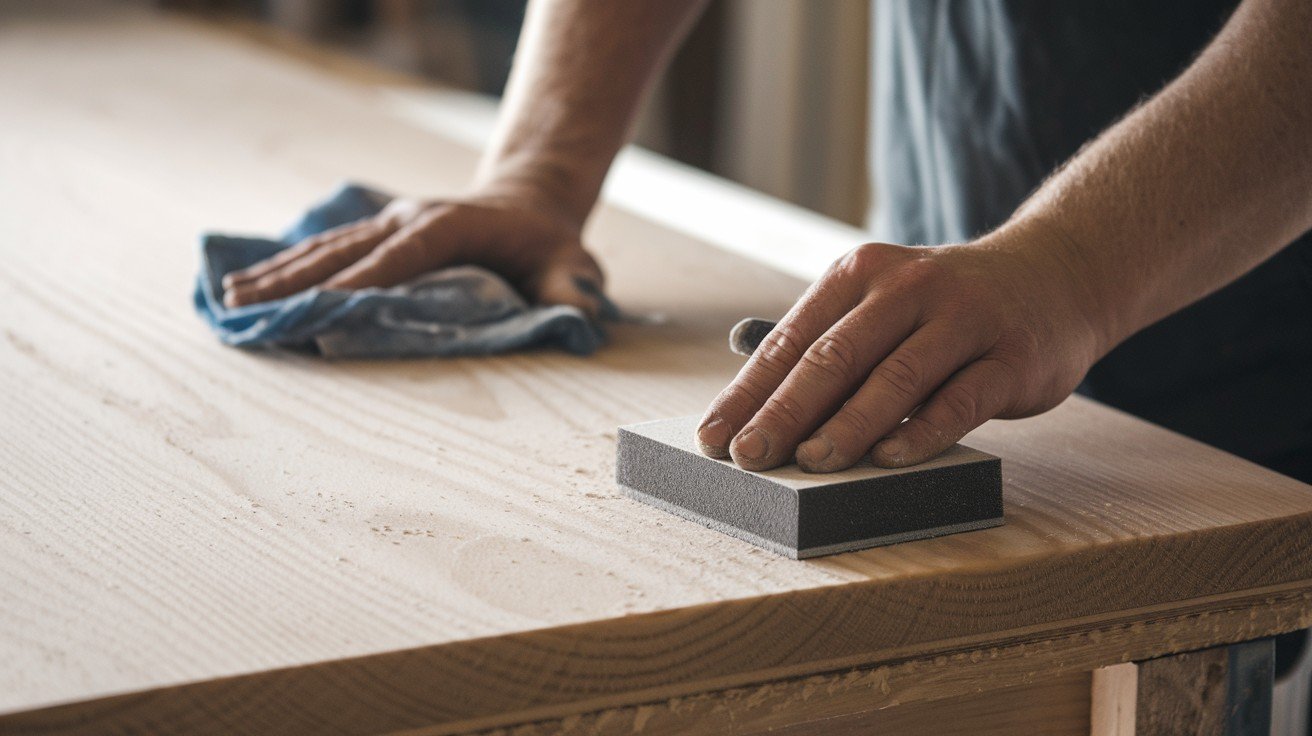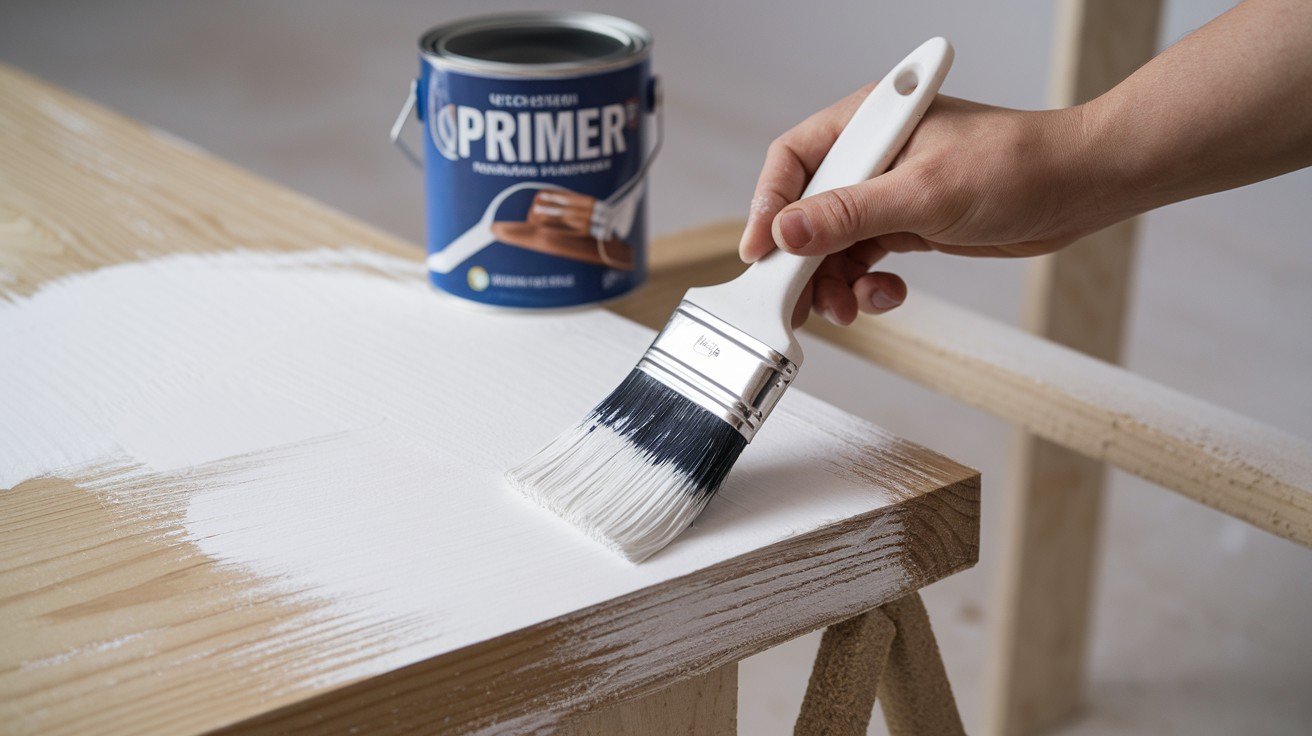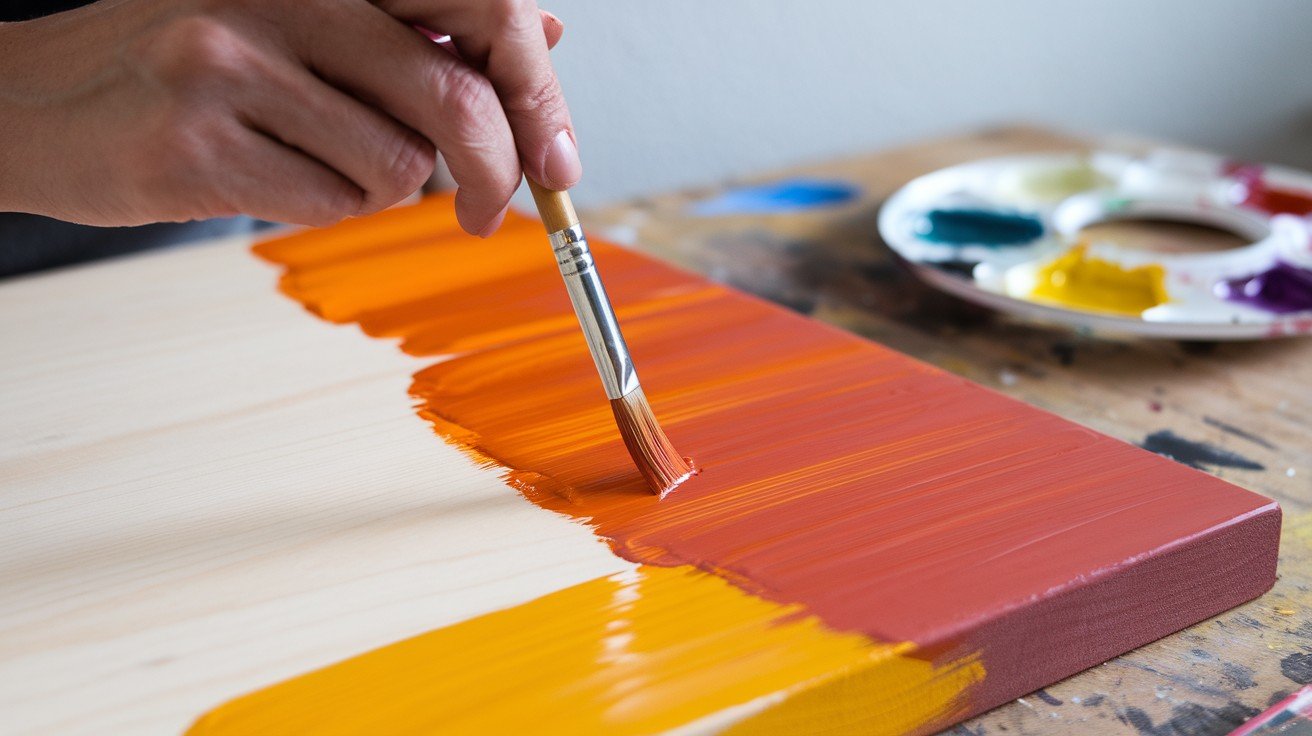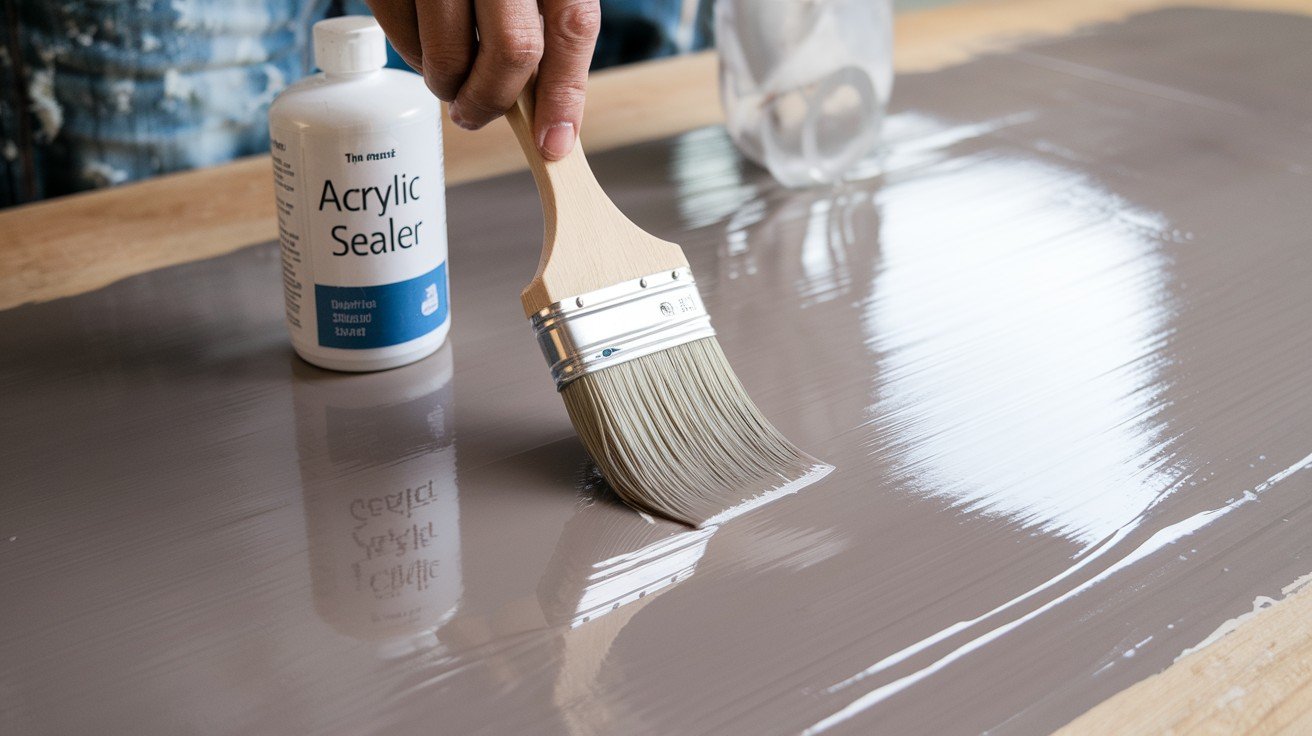Thinking about giving your wooden furniture or craft project a fresh new look?
You’re probably curious: “Is acrylic paint good for wood?”; and that’s a smart question to ask before you start your painting project.
The short answer is yes; acrylic paint can work amazingly on wood surfaces when applied correctly.
But like any painting technique, there are important factors to consider that will make or break your results.
From preparation steps to choosing the right products, getting the best outcome requires knowing what you’re doing.
Some painters love acrylics for their quick-drying properties and easy cleanup, while others worry about durability and adhesion issues.
In this guide, we’ll cover everything you need to know – the benefits, potential challenges, proper application techniques, and how acrylics compare to other paint options for wood projects.
Why Use Acrylic Paint on Wood?
There are several practical reasons why people choose this option for their wood projects.
Cost considerations make acrylics attractive for budget-conscious projects
Compared to specialty wood stains or high-end oil paints, acrylics offer good coverage and quality at a reasonable price point.
This makes them ideal for large projects or when you’re experimenting with colors and techniques.
Availability is another key factor
You can find acrylic paints at virtually any hardware store, craft shop, or home improvement center.
This widespread availability means you won’t have to hunt down specialty suppliers or wait for special orders when you need to match colors or buy additional supplies.
Storage and shelf life considerations favor acrylics
These paints maintain their quality for years when stored properly, and they don’t separate or thicken as quickly as some other paint types.
This makes them practical for homeowners who want to keep touch-up paint on hand.
Advantages of Acrylic Paint for Wood Surfaces
- Strong adhesion to properly prepped wood surfaces When wood is correctly sanded and primed, acrylic paint forms a reliable bond that resists peeling and chipping.
- Exceptional durability and fade resistance with proper sealing Quality acrylic paints maintain their color vibrancy for years, especially when protected with a clear topcoat.
- Non-toxic formulations with minimal odor during application Most acrylic paints contain fewer harmful chemicals compared to oil-based alternatives, making them safer for indoor projects.
- Perfect compatibility with furniture, craft projects, and home decor The smooth finish and color consistency of acrylics work well for detailed decorative work and large furniture pieces alike.
- Excellent coverage and color opacity on wood grains Acrylic paint effectively covers wood’s natural patterns and previous finishes when applied properly.
Potential Drawbacks of Acrylic Paint on Wood
- May chip or peel if surface preparation is inadequate
Without proper sanding and cleaning, acrylic paint struggles to bond effectively with wood surfaces. Poor adhesion leads to premature failure, especially on high-touch areas or surfaces with existing finishes that weren’t properly removed.
- Limited water resistance without additional protective coating
Raw acrylic paint allows moisture penetration, which can cause wood swelling, warping, or paint failure over time. This vulnerability makes unsealed acrylic paint unsuitable for bathroom furniture, outdoor projects, or areas with high humidity exposure.
- Dependency on primer and topcoat systems for optimal performance
Skipping primer can result in uneven coverage, bleed-through from wood tannins, or poor paint adhesion. Similarly, omitting a protective topcoat leaves the paint vulnerable to scratches, stains, and premature wear from daily use.
- Potential for brush marks and application inconsistencies
Acrylic paint’s quick-drying nature can make it challenging to maintain a wet edge during application. This characteristic may result in visible brush strokes or roller marks, particularly on large, flat surfaces that require smooth finishes.
- Color shifting and transparency issues on certain wood types
Some wood species with strong grain patterns or natural oils can cause color variations or transparency problems. Dark woods may require multiple coats to achieve the intended color depth and uniformity across the entire surface.
How to Paint Wood with Acrylic Paint (Step-by-Step)?
Step 1: Prepare the Surface

Begin by thoroughly cleaning the wood with a tack cloth or damp rag to remove all dust, dirt, grease, and any existing wax or polish.
Sand the surface with 120-220 grit sandpaper to create a slightly rough texture that helps the paint adhere properly.
Step 2: Apply a Primer

Use a high-quality wood primer specifically designed for your wood type to prevent tannin bleed-through and reduce paint absorption.
Allow the primer to dry completely according to the manufacturer’s instructions, typically 2-4 hours, before proceeding to the paint application.
Step 3: Paint with Acrylics

Apply the first coat of acrylic paint in thin, even layers using smooth brush strokes or roller techniques to avoid drips and thick spots.
Wait for each coat to dry completely (usually 1-2 hours) before applying the next layer, typically requiring 2-3 coats for full coverage and color depth.
Step 4: Seal the Paint

Apply a clear acrylic sealer in your preferred finish (matte, satin, or gloss) to protect the paint from scratches, moisture, and daily wear.
This protective coating is particularly critical for furniture pieces, outdoor items, or any surfaces that will experience regular handling or exposure to elements.
Acrylic Paint vs. Other Paint Types for Wood
|
Feature |
Acrylic Paint |
Latex Paint |
Oil-Based Paint |
Chalk Paint |
|
Best Use |
Fine work, crafts, furniture |
Interior walls, large surfaces |
High-durability projects |
Vintage/distressed furniture |
|
Drying Time |
1-2 hours |
2-4 hours |
6-8 hours |
30-60 minutes |
|
Durability |
Good with sealer |
Moderate |
Excellent |
Low to moderate |
|
Cleanup |
Water-based, easy |
Water-based, easy |
Solvent required |
Water-based, easy |
|
Finish Options |
Multiple (matte to gloss) |
Limited options |
Multiple options |
Primarily matte |
|
Color Selection |
Extensive range |
Good selection |
Wide variety |
Limited but mixable |
|
Coverage |
Excellent opacity |
Good coverage |
Superior coverage |
Variable coverage |
|
Cost |
Moderate |
Low to moderate |
Higher cost |
Moderate to high |
|
Primer Required |
Usually yes |
Sometimes |
Often yes |
Usually no |
|
VOC Content |
Low |
Low |
High |
Very low |
|
Application Skill |
Beginner-friendly |
Easy |
Intermediate |
Very easy |
|
Weather Resistance |
Good with sealer |
Poor to moderate |
Excellent |
Poor without wax |
Conclusion
Acrylic paint proves to be an excellent choice for wood surfaces when you follow proper preparation and application techniques.
Its combination of affordability, color variety, and user-friendly characteristics makes it ideal for both beginners and experienced painters working on furniture, crafts, and decorative projects.
While acrylics require primer and sealer for optimal results, the investment in these additional steps pays off with long-lasting, professional-looking finishes.
The quick drying time and easy cleanup make project completion faster and more convenient compared to oil-based alternatives.
For most wood painting projects, especially those involving detailed work or indoor furniture, acrylic paint offers the best balance of performance, cost, and ease of use.
With proper surface preparation and quality materials, you can achieve durable, beautiful results that will enhance your wood projects for years to come.
Frequently Asked Questions
Do I need primer when using acrylic paint on wood?
Yes, primer is essential for proper adhesion, preventing bleed-through, and achieving even coverage on most wood surfaces.
How long should I wait between acrylic paint coats on wood?
Allow 1-2 hours drying time between coats, though humidity and temperature can affect this timing significantly.
Can acrylic-painted wood be used outdoors without sealing?
No, unsealed acrylic paint isn’t waterproof and will deteriorate quickly outdoors. Always apply a protective sealer for exterior use.

